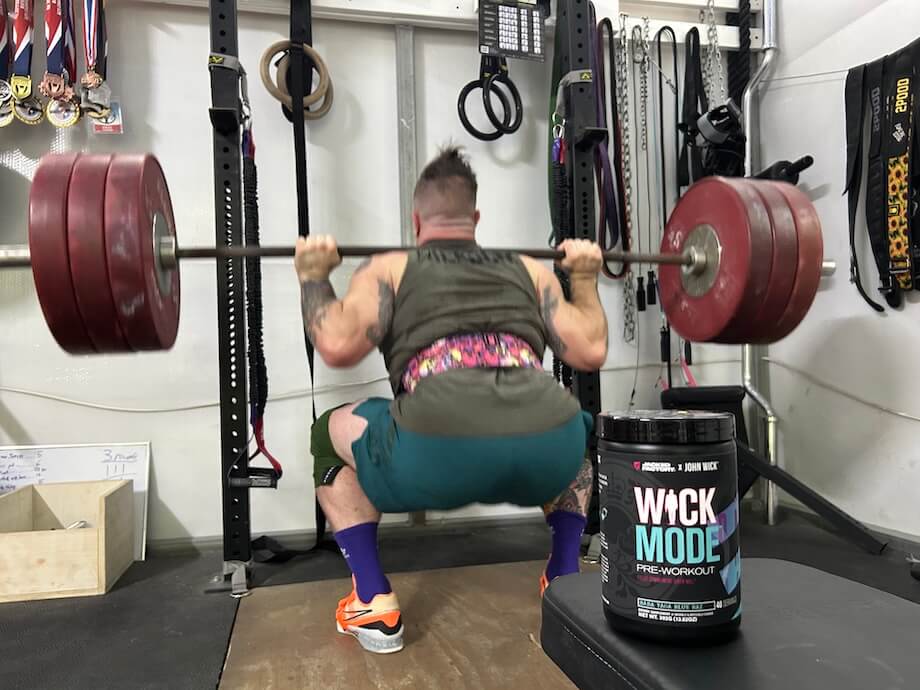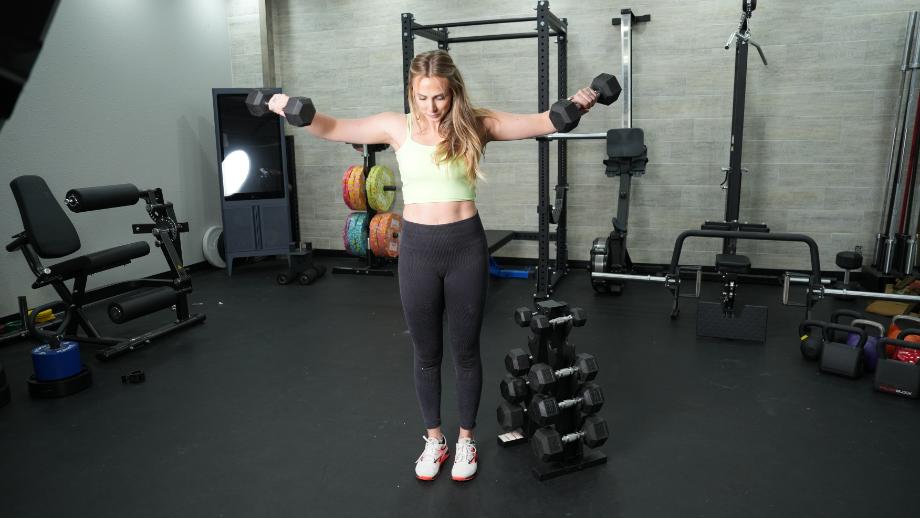You’re up and ready to go.
You got your gear on, and the weather has cleared up for your run, but one question remains. What running workout are you going to do today? There are many benefits of running, but running with a plan is even better.
When you want to focus on your run and get the most out of the time you have, then choosing from the running workouts below is your best bet. Below we’ll dive into running workouts ranging from beginner interval running to hill running.
Whether you are marathon training, new to running, or want to improve your running economy, we have you covered with the different types of running workouts below. Strap on your best running shoes, and let’s go.
Running Workout for Beginners
When starting your running journey, you need to build stamina and endurance and get your bones, muscles, and joints accustomed to the impact that running has. Your training plan should include building your cardio fitness and adjusting to the vigors of running, which is best done and progressed slowly.
Because the last thing you want is to get injured. Here you’ll run for a certain distance or time, walk for a certain distance or time, gradually reduce the time you walk, and increase the time you run. Here is an example:
10 Rounds:
- Run for 1 minute
- Walk for 2 minutes
Each week, add 30 seconds to the time you run (keeping the walking time the same) until you reach 10 minutes of continuous running training.
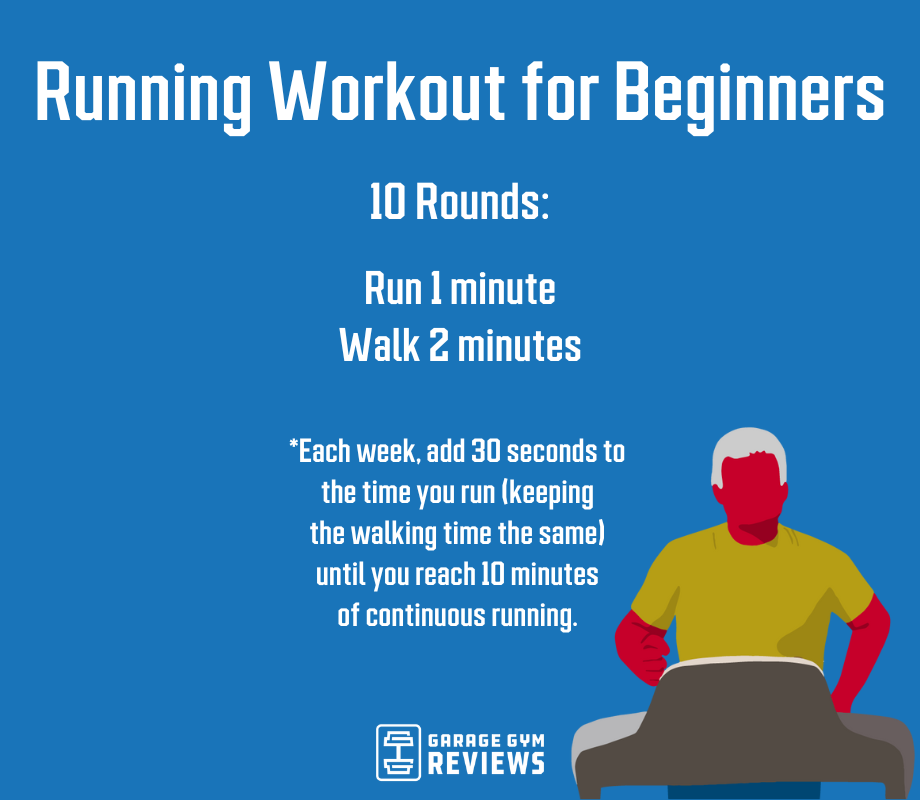
Progressive Long Run
Looking to increase your endurance for an upcoming half-marathon? Challenge yourself mentally and physically with a long-duration run that ramps up the pace down the stretch.
- Jog at a leisurely pace for 10 minutes
- Run for 30 minutes at a casual pace (around 60% of your maximum heart rate)
- Increase your pace every 10 minutes until you’re at about 80% of your maximum heart rate
- Slow down to an easy jog for the final 10 minutes
Fartlek Running Workouts
Fartlek is Swedish for speed play, where the pace continually varies to eliminate boredom and to improve your speed and aerobic endurance. Fartlek running workouts are either performed on the road or a treadmill, and here we will include both. Include fartlek training when you’re getting ready for a half-marathon or marathon training because distance runners need some speed work.
Treadmill Fartlek Workout
- Warm up by walking for 5 minutes at 3.0 miles per hour at a 3% incline
- Run at a moderate pace for 1 minute at a 1% incline
- Jog at a low-intensity pace for 30 seconds at a 1% incline
- Run at a fast pace for 30 seconds to 1 minute
- Jog at a low-intensity pace for 30 seconds at a 1% incline
- Continue varying speed and length of time until you reach 25 minutes
- Cool down with an easy run for 5 minutes at 3.5 MPH at a 3% incline
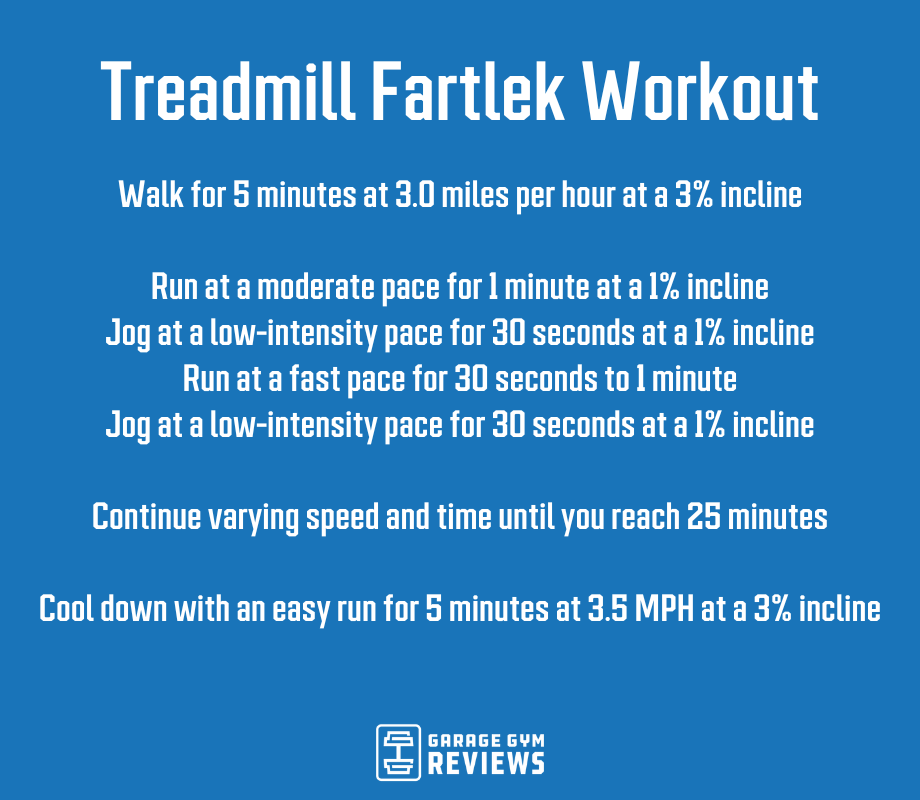
Fartlek Road Workout
5 Rounds:
- Jog at a leisurely pace for 5 minutes
- Run at a faster pace for 1 minute
- Jog for 2 minutes
- Cool down and jog for 5 minutes
Add one interval per week until you reach 8 intervals.
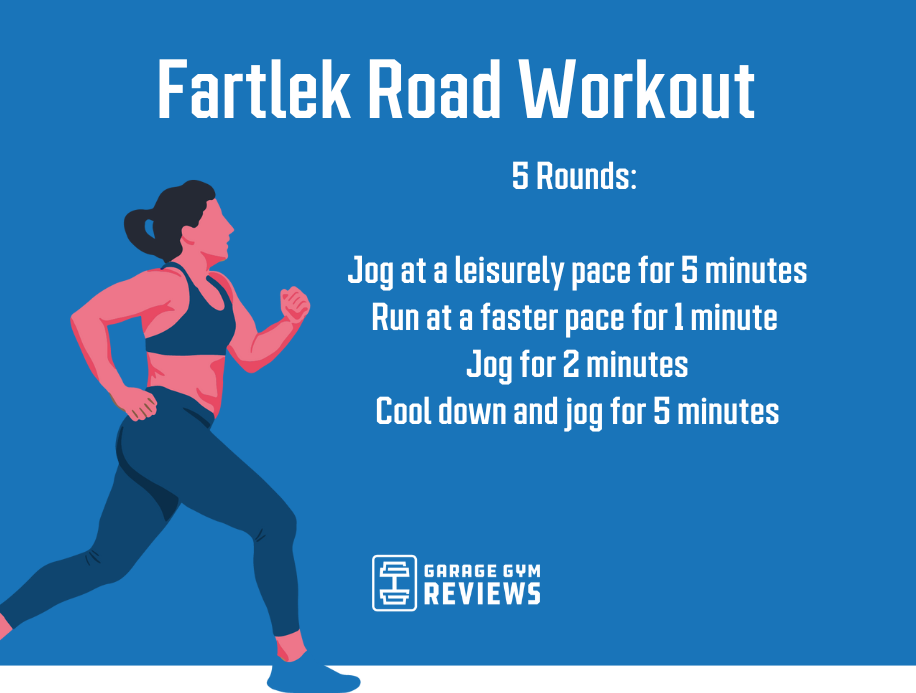
Tempo Run
Tempo runs improve your lactate threshold (you know, feeling the burn) to help you improve your aerobic capacity and the ability to go hard for longer. Think of tempo runs as HIIT (high-intensity interval training). A tempo run pace is running around 85% to 90% of your maximum heart rate, or running 30 seconds slower than your usual per-mile race pace.
If you are new to tempo running, know your per-mile pace and maximum heart rate before you start. Here is an example of a tempo run.
RELATED: Post-Run Stretches
- Jog for 5-10 minutes
- Tempo pace run (around or above your marathon pace) for 1-2 miles
- Run at an easy for 1-3 miles
- Jog and cool down for 5-10 minutes
To progress, increase the distance of your tempo run by .25 to .50 miles when you are ready.
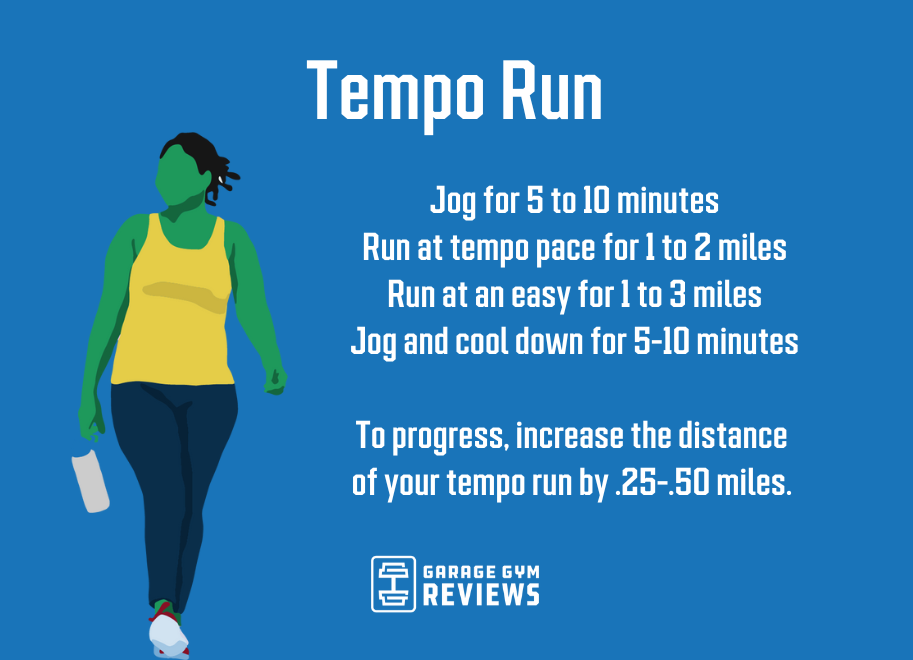
Speed Workout
Just as you do in fartlek and interval training, during speed workouts, you vary between fast, moderate, and easy paces to improve your overall speed and endurance. If you’re new to speed running workouts, the one-to-one speed work/rest interval training is a great start.
Repeat 10 times for a total of 20 minutes:
- Jog at a leisurely pace for 5 minutes
- Jog at a moderate pace for 5 minutes
- Run fast for 1 minute
- Run easy for 1 minute
- Cool down at an easy pace for 5 minutes
Add one fast/easy interval per week until you reach 20 intervals.

Running Pyramid Workout
A pyramid running workout involves running at high intensity for a certain distance alternated with a period of low intensity and repeated at either increasing or decreasing distance. You go up and down the pyramid. Ideally, these are performed at a 400-meter track, but can be done on the road in half-mile increments.
Here’s an example:
- Warm up for 10 minutes of jogging and include some activation exercises like high knee skips and Frankenstein walks.
- 2×400m high intensity with 200m recovery jog
- 1×800m high intensity with 400m recovery jog
- 1×1200m high intensity with 800m recovery jog
- 1×400 high intensity with 400m recovery jog
- Cool down with 5-10 minutes of jogging

Pyramid Strides
Strides are short, controlled sprints that can help improve your running form, speed, and efficiency. They’re typically performed at about 85% to 95% of your max speed for 50 to 100 meters. You can incorporate strides after an easy run or as part of a warm-up before intense workouts.
This pyramid-style session starts and ends with 60-meter runs with a pair of 80-meter strides and a 100-meter run sandwiched between. Walk back to the start for recovery between each stride, taking as much time as needed to be fresh for the next run.
- Jog at leisurely pace for 5 minutes
- 60-meter stride at 85% effort
- 80-meter stride at 85% effort
- 100-meter stride at 95% effort
- 80-meter stride at 85% effort
- 60-meter stride at 85% effort
- Jog at leisurely pace for 5 minutes to cool down
Tabata Running Workout
Tabata is a protocol that uses 20 seconds of a very hard effort with 10 seconds rest and repeat for eight rounds. This workout is intense, and is ideal for runners with a high fitness level and a good aerobic base rather than for those new to cardio exercise. This workout can be performed on a treadmill, road, or track.
RELATED: The Surprising Benefits of Tabata
Warm-up with a jog at an easy pace for 3 to 5 minutes.
8 Rounds:
- Run all out for 20 seconds
- Walk or rest for 10 seconds
Cool down for 5 minutes.
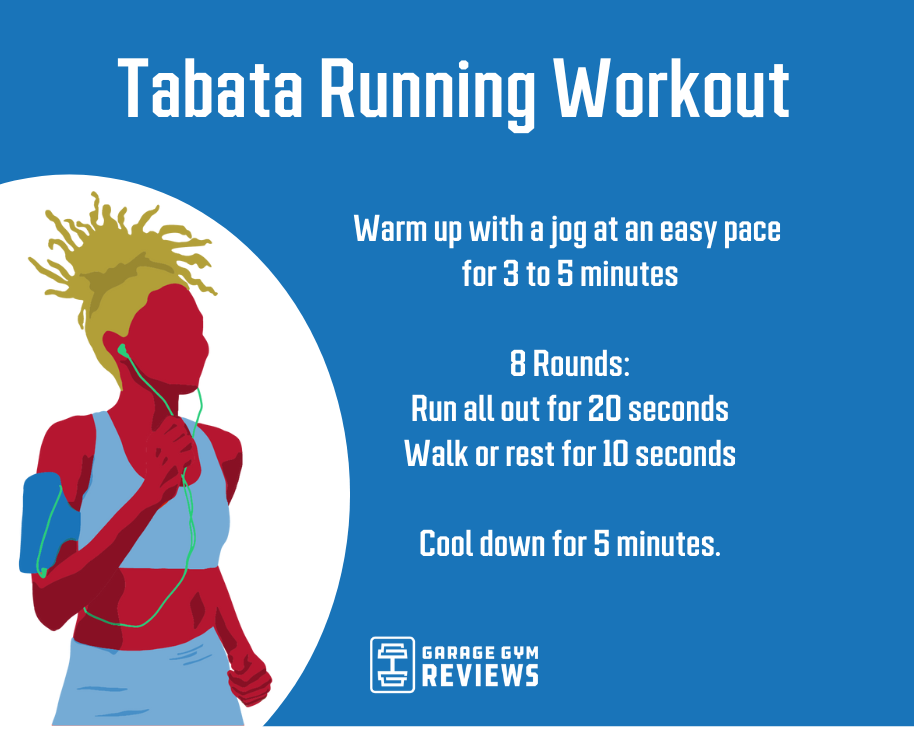
Running Interval Workout
Just about anyone can do and benefit from interval training, including beginners and advanced runners.
An interval workout is high-intensity running alternating with low-intensity running, walking, or rest. Interval workouts are done for time or distance and use a work-to-rest ratio. A 1:1 work-rest ratio could look like 30 seconds of hard work with 30 seconds at a slower pace, or a 400-meter run with a 400-meter walk. Other work rest ratios to use here are 1:2 and 1:3.
Jog lightly for 5 minutes
Complete 4 to 6 rounds:
- Run fast for 30 seconds
- Walk or jog for 30-90 seconds
Recovery run for a 5-minute cooldown.
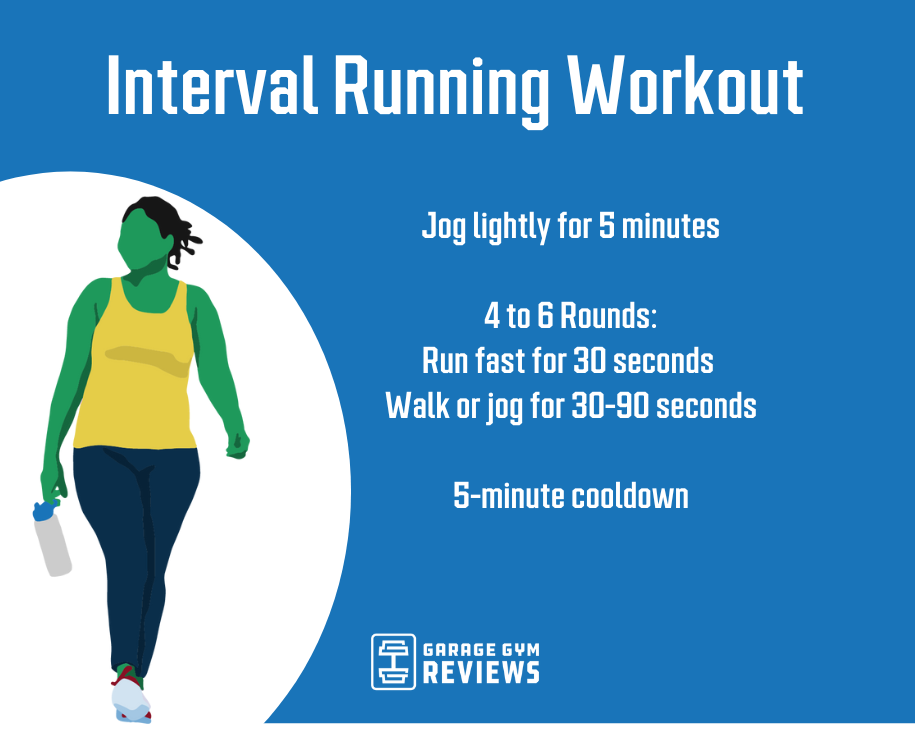
Ladder Run
A form of interval training that’ll keep you on your toes, ladders are running speed workouts that start with shorter intervals, progress to longer ones, then finish with shorter intervals again. This format helps build speed and running efficiency while also preventing you from getting bored.
Increasing your pace with each interval provides a ladder-like climbing experience that will test your mental and physical fortitude. Go at an easy pace (a slow jog) for your recovery intervals. While marathon, half-marathon, 10K, and 5K paces are used as guidelines, the most important part is to increase your speed for each work interval, topping out at a full sprint.
- Jog at a leisurely pace for 5 minutes
- Work interval: 5 minutes at a marathon pace
- Recovery interval: 1 minute at easy pace
- Work interval: 4 minutes at half-marathon pace
- Recovery interval: 1 minute at easy pace
- Work interval: 3 minutes at 10K pace
- Recovery interval: 1 minute at easy pace
- Work interval: 2 minutes at 5K pace
- Recovery interval: 1 minute at easy pace
- Work interval: 1 minute at full sprint
- Recovery interval: 1 minute at easy pace
- Jog at a leisurely pace for 5 minutes to cool down
Hill Workout
Running hills uses similar muscles and intensity as sprinting with the added muscular development that comes with moving across challenging terrain. The trick here is to find hills in your neighborhood to help take your fast running speed to a new level. You can also use an incline treadmill if you don’t have an accessible hill.
Here’s a beginner hill workout to try:
- Begin with a dynamic warm-up of high knee skips, bodyweight squats, and reverse lunges before jogging
- Jog for 5-10 minutes
4 rounds:
- Run fast up the hill
- Walk slowly down the hill
- Take 10 seconds to catch your breath, then start the next sprint
Cool down with an easy jog for 5 to 10 minutes.
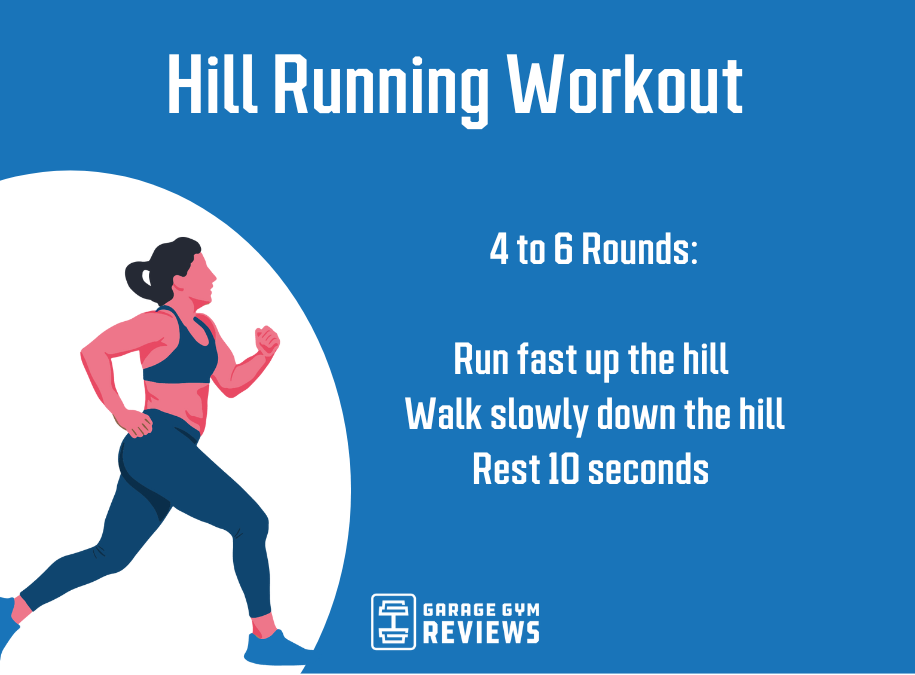
Track Workouts
The flat, even surface of a track gives runners a stable training surface. This environment also encourages precise pacing, as tracks have clearly marked distance measurements that make it easier to assess your progress. While the repetitive nature of running laps may garner painful memories of middle school P.E. class, it can also help build the mental toughness and consistency needed to succeed on race day.
How you structure your track workouts depends on your goals. I’ve put together sessions for speed and endurance so you can get started.
Track Workout for Speed
- Jog at a leisurely pace for 5 minutes, followed by dynamic stretches and mobility drills
- Four 200-meter runs at 95% of your maximum effort with 200 meters of jogging or easy walking for recovery between each interval.
- Four 400-meter runs at 95% of your maximum effort with 400 meters of easy jogging or walking for recovery between each interval.
- Four 100-meter runs at maximum effort with 100 meters of walking for recovery between each interval.
- Cool down with static stretching and foam rolling.

Track Workout for Endurance
- Jog at a leisurely pace for 10 minutes
- Four 1,600-meter runs with 2-3 minutes recovery in between.
- Jog at a leisurely pace for 5-10 minutes to cool down.
Running Technique and Form
Although he made it work, nobody should emulate Forrest Gump’s infamous running form. One of the biggest keys to sustained success on the track, treadmill, or other terrain is utilizing proper mechanics so you maximize efficiency and minimize your risk of injury.
How exactly should this look? Here’s a breakdown of the different technical elements involved in running.
Posture
Keep your back straight, shoulders relaxed, and head up and looking forward. Engage your core to avoid slouching or leaning too far forward (or backward). Maintaining this position can be challenging when fatigue sets in, so do your best to stay upright even when things get tough.
Foot Strike
How you land on your foot each time can have a huge impact on your performance. A forefoot strike places the weight of impact on your toes and ball of your foot, making it ideal for powering up on a hill. A midfoot strike evenly distributes the shock of impact and is best for maintaining high, consistent speeds. A rearfoot strike is the most common amongst runners, as your heel hits the ground first.
Arm Swing
Rather than letting your arms dangle by your sides, keep them bent at 90-degree angles, keeping your elbows tucked close to your sides. Swing them forward and backward from your shoulder joint to maintain a comfortable rhythm.
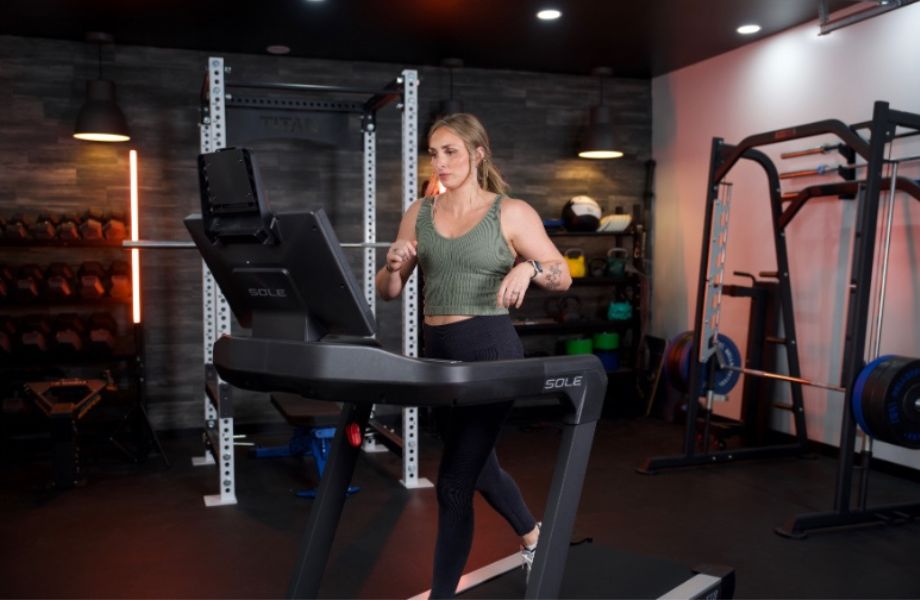
Stride Length
Stride length is very much an individual matter, as every runner is built differently. However, a good rule of thumb is that your feet should land directly under your hips. If your lower leg lands in front of your body, your stride is too long. Maintaining proper stride length promotes fluid, efficient running and minimizes wasting energy.
Breathing
You won’t be much use if you’re huffing and puffing around the track with your mouth wide open gasping for air. Beginners often overlook the importance of their breathing technique, but this makes a huge difference, especially at higher intensities.
According to the American Lung Association1, runners should practice rhythmic breathing—a tool that can enhance oxygen circulation. They recommend three steps as you inhale and two steps as you exhale, which will naturally shift your breathing so it’s not impacting the same foot on the inhale repeatedly. You can try a three-step pattern (two steps as you inhale and one step as you exhale) when running at a faster pace.
Running For Speed Vs. Endurance
Understanding the differences between running for speed and running for endurance can help you tailor your training accordingly. From achieving faster times to developing stamina for long-distance events, here’s a side-by-side comparison of these specific running goals.
| Speed | Endurance | |
| Objective | Achieve maximum velocity over shorter distances | Maintain a steady pace over longer distances |
| Energy System | Anaerobic | Aerobic |
| Muscle Fiber Type | Fast twitch (Type II) | Slow-twitch (Type I) |
| Physiological Adaptations | Muscle strength and power | Cardiovascular efficiency, lung capacity, muscular endurance |
| Workout Type | High-intensity interval training (HIIT), sprints, plyometrics | Steady-state runs, tempo runs, long runs at lower intensity |
| Recovery | More frequent with longer rest periods | Shorter rest periods (if any) |
Running Workouts: FAQs
Can you get a nice body by just running?
While running is an effective form of cardiovascular exercise that burns calories, you need to resistance train (lift weights) and follow a nutrient-dense, protein-focused diet to build a lean, muscular physique.
How can I jog for 30 minutes?
Start at a comfortable, steady pace that allows you to focus on maintaining a consistent rhythm for as long as possible. If you can’t maintain a jogging pace for 30 minutes, incorporate walking intervals to build endurance.
Are there other exercises as effective as running?
Cycling, swimming, rowing, and high-intensity interval training (HIIT) are all valuable exercises that can provide similar cardiovascular benefits as running. Activities like cycling and swimming are also low-impact, making them ideal for those with joint issues.
References
- Association, A. L. (2024b, July 10). Breathing basics for runners. American Lung Association. https://www.lung.org/blog/breathing-basics-for-runners
- Guszkowska M. [Effects of exercise on anxiety, depression and mood]. Psychiatr Pol. 2004 Jul-Aug;38(4):611-20. Polish. PMID: 15518309.








